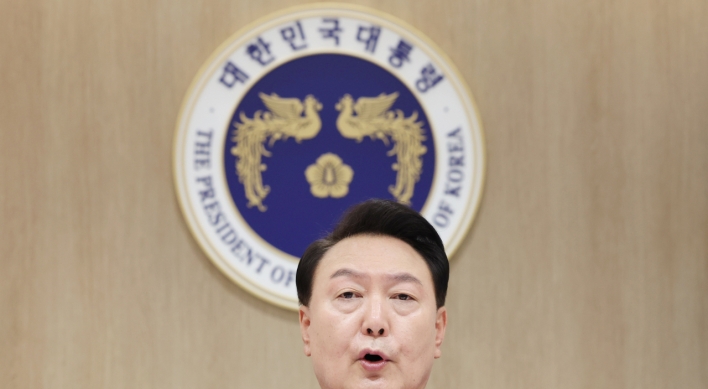Cyber attack retaliation against Seoul`s move to join `Cyber Storm`
ByPublished : March 30, 2010 - 16:33
From news reports
Amid ongoing speculations surrounding the latest cyber attacks against major South Korean and U.S. websites, observers said the attacks could be Pyongyang`s act of retaliation against Seoul`s attempt to join a U.S.-led cyber security exercise.
The National Intelligence Service said on Wednesday that the communist state or pro-North Korean elements seemed to have unleashed the "distributed denial of service" virus, disrupting dozens of government as well as private company websites in the two countries.
The spy agency cited a statement issued on June 27 by the North Korean Committee for the Peaceful Reunification of the Fatherland, which denounced the Seoul`s plan to participate in U.S.-led "Cyber Storm."
Calling the move an "intolerable provocation," the statement said North Korea is "fully ready for any form of high-tech war," according to the North`s official Korean Central News Agency.
More recently, North Korea`s Rodong Shinmun accused South Korea of trying to rage a cyber war by moving to join the "Cyber Storm" exercise.
In its editorial, the daily argued that the Lee Myung-bak government is trying to "team up with foreign countries" to eventually carry out a preemptive strike against North Korea, and that such a move "cannot be overlooked."
Observers are saying, based on the recent verbal accusations regarding the cyber security program, that the North must have attacked South Korean and U.S. websites as an act of retaliation.
The United States leads the cyber warfare exercises to test its defenses against computer hackers. The latest exercise, Cyber Storm II, held early last year, was the largest one of its kind, bringing together Australia, Canada, New Zealand and the United Kingdom.
U.S. Homeland Security said the exercise aimed to test: participants` capacity to prepare for, protect against, and respond to cyber attacks; how they make strategic decisions and coordinate interagency responses against national-level policy and procedures; how they validate and share information and what communications paths they use to collect and share cyber incident situational awareness, response and recovery information; and how to share sensitive information across boundaries and sectors without compromising proprietary or national security interests.
In the Cyber Storm II exercise, crisis managers had to identify, evaluate and respond to more than 1,800 malware incidents, including botnet, phishing, and denial of service attacks.
Amid ongoing speculations surrounding the latest cyber attacks against major South Korean and U.S. websites, observers said the attacks could be Pyongyang`s act of retaliation against Seoul`s attempt to join a U.S.-led cyber security exercise.
The National Intelligence Service said on Wednesday that the communist state or pro-North Korean elements seemed to have unleashed the "distributed denial of service" virus, disrupting dozens of government as well as private company websites in the two countries.
The spy agency cited a statement issued on June 27 by the North Korean Committee for the Peaceful Reunification of the Fatherland, which denounced the Seoul`s plan to participate in U.S.-led "Cyber Storm."
Calling the move an "intolerable provocation," the statement said North Korea is "fully ready for any form of high-tech war," according to the North`s official Korean Central News Agency.
More recently, North Korea`s Rodong Shinmun accused South Korea of trying to rage a cyber war by moving to join the "Cyber Storm" exercise.
In its editorial, the daily argued that the Lee Myung-bak government is trying to "team up with foreign countries" to eventually carry out a preemptive strike against North Korea, and that such a move "cannot be overlooked."
Observers are saying, based on the recent verbal accusations regarding the cyber security program, that the North must have attacked South Korean and U.S. websites as an act of retaliation.
The United States leads the cyber warfare exercises to test its defenses against computer hackers. The latest exercise, Cyber Storm II, held early last year, was the largest one of its kind, bringing together Australia, Canada, New Zealand and the United Kingdom.
U.S. Homeland Security said the exercise aimed to test: participants` capacity to prepare for, protect against, and respond to cyber attacks; how they make strategic decisions and coordinate interagency responses against national-level policy and procedures; how they validate and share information and what communications paths they use to collect and share cyber incident situational awareness, response and recovery information; and how to share sensitive information across boundaries and sectors without compromising proprietary or national security interests.
In the Cyber Storm II exercise, crisis managers had to identify, evaluate and respond to more than 1,800 malware incidents, including botnet, phishing, and denial of service attacks.


















